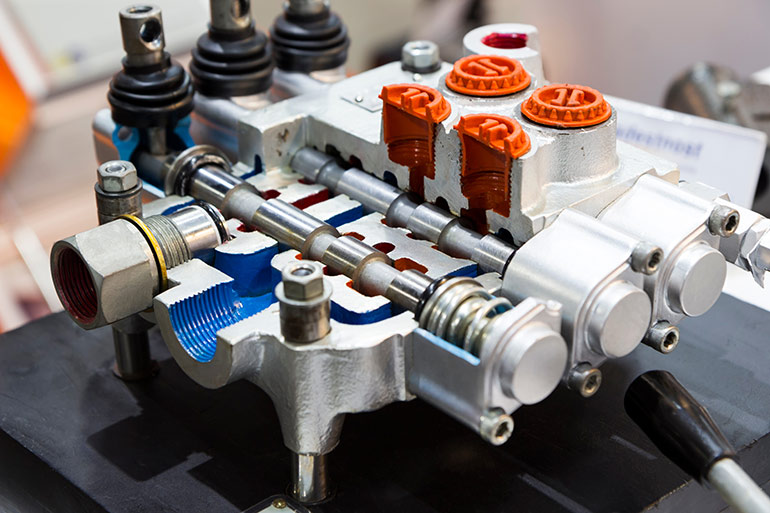By Josh Cosford, Contributing Editor
There are very few hydraulic systems operating without directional valves, and aside from modern technologies that can make do with a servo-driven pump and a single actuator, you’ll be hard-pressed to think of a way to control actuators without them. They are responsible for managing the flow and direction of hydraulic fluid, so when these valves malfunction or fail, the consequences can be costly and disruptive. Recognizing the signs of a failing or failed hydraulic directional valve prevents downtime and avoids potentially catastrophic failures.

- Loss of hydraulic power: One of the most noticeable signs of a failing directional valve is a loss of hydraulic power. You may observe a decrease in the speed of hydraulic actuators, causing equipment to operate sluggishly or fail to respond as expected or at all. This loss of power significantly impacts productivity and performance.
- Erratic operation: A failing directional valve may cause hydraulic equipment to operate erratically, and you might notice sudden and unexpected movements, jerking motions, or uneven operation. These irregularities can pose safety risks to personnel and machinery as erratic operation makes smooth control difficult with lever valves or unpredictable operation with solenoid valves.
- Leakage: Hydraulic fluid leakage around the spool or through the poppet clearly indicates performance-robbing problems. Contamination-related wear opens gaps, allowing fluid to escape from high pressure areas to lower pressure. Any hydraulic fluid lost under pressure before achieving work is wasted as pure heat, which creates problems of its own. Also, hot oil is less viscous, exacerbating leakage due to thinning oil.
- Increased noise levels: Unusual noises emanating from hydraulic equipment, such as hissing, whining, or grinding sounds, may signal underlying issues with the directional valve. These noises may indicate leakage, fluid restriction, or mechanical stress within the valve assembly, which can lead to failure if not addressed promptly.
- Delayed response: When actuating hydraulic cylinders or other components, a failing directional valve may exhibit delayed response times. You may notice a lag between input commands and system response, hindering precise control and operational efficiency. Sometimes, large particles may jam between the spool and body, or sludge-covered internals may increase static friction, resulting in slow, erratic or unpredictable behavior.
- Overheating: Excessive heat buildup in hydraulic systems is often a symptom of component leakage, including directional valves. Overheating can occur in restricted flow, inefficient valve operation or restricted flow. Monitoring system temperature and addressing overheating issues promptly can help prevent catastrophic valve failure and damage to surrounding components.
- Loss of functionality: Ultimately, a failed hydraulic directional valve will lose functionality for affected equipment or systems. Machinery may become inoperable, leading to unplanned downtime, missed deadlines, and costly repairs. Identifying and proactively addressing potential valve failures can mitigate these risks and minimize disruptions to operations.
Recognizing the signs of a failing or failed hydraulic directional valve is essential for maintaining hydraulic systems’ reliability, safety, and efficiency. Regular inspection, preventive maintenance, and prompt troubleshooting are critical for detecting and addressing valve issues before they escalate into costly failures. By staying vigilant and responsive to the warning signs outlined above, operators can minimize downtime, optimize performance, and prolong the service life of hydraulic equipment.
Filed Under: Components Oil Coolers, Engineering Basics, Technologies, Valves & Manifolds